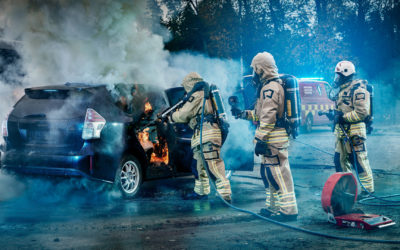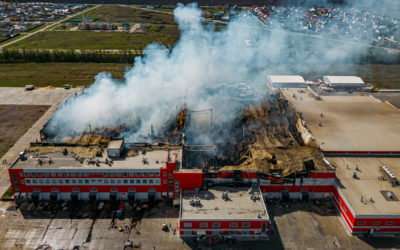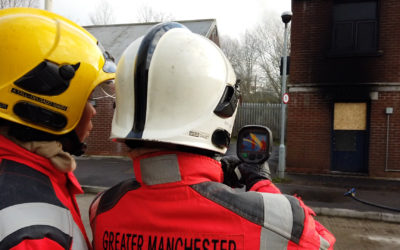A large fire in an industrial building such as a warehouse can present significant risks to firefighters, especially if the warehouse contains hazardous materials or materials which may make the fire burn more intensely. Entry into such fires can be hazardous, and firefighters must always be aware of the risk of collapse of all or part of the building.
Fires in large industrial buildings can require significant resources to control and extinguish. It may also take time for the needed resources to arrive and deploy their full firefighting weight of attack.
However, a successful attack can significantly reduce the risks to firefighters. It can also minimise the damage to the building and its contents, allowing the business to survive and carry on.
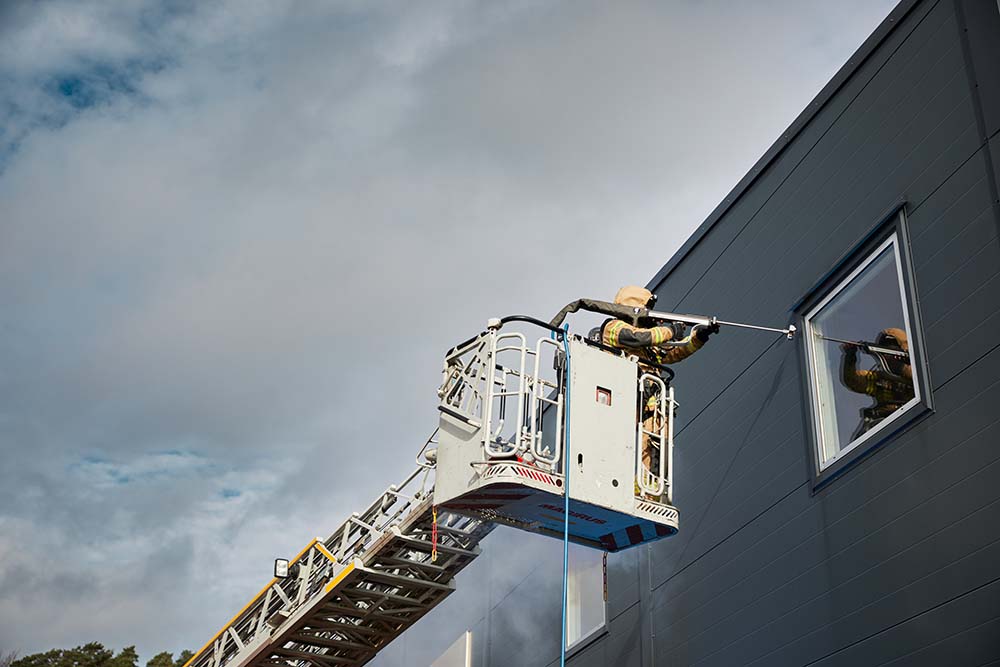
Fire in a warehouse
The video below is based on an actual operational incident and illustrates a possible scenario for a large warehouse fire.
In this case, the fire starts in stored goods in the warehouse. The smoke and heat then spread into the next-door storage area. A fire response unit equipped with Cobra arrives on the scene, and the Incident commander orders a 360° thermal scan to identify the seat of fire.
One Cobra is deployed to cool the hot fire gases and suppress fire spread whilst the 360° scan is continued. The scan shows that the fire has spread to other areas; hence the Incident commander orders to re-position the initial Cobra to suppress fire spread.
A second appliance equipped with Cobra arrives, and another Cobra used to suppress the fire and cool the boundary is deployed. At this point, Positive Pressure Ventilation (PPV) fans are deployed. The surrounding areas are pressurised to minimise heat and smoke spread.
A third appliance equipped with Cobra arrives, and additional positive pressure fans are deployed. A constant risk assessment is made, and the third Cobra is also deployed to cool the boundary and prevent fire spread.
By attacking the fire with Cobra from several directions, it is possible to quickly limit the spread and dampen the course of the fire.
After a while, the firefighters can enter the compartment in much safer conditions to damp down and extinguish the remaining fire.
NOTE!
Multiple Cobra use at an incident requires very good fireground communication to ensure that all crews working in the vicinity know exactly where each Cobra lance is operating.
Scan – Attack – Ventilate – Enter
The different stages of the Cobra Method SAVE can be used in the order most appropriate – for example, depending on the situation, the crew may have to Scan and then Enter before Attacking and Ventilating.
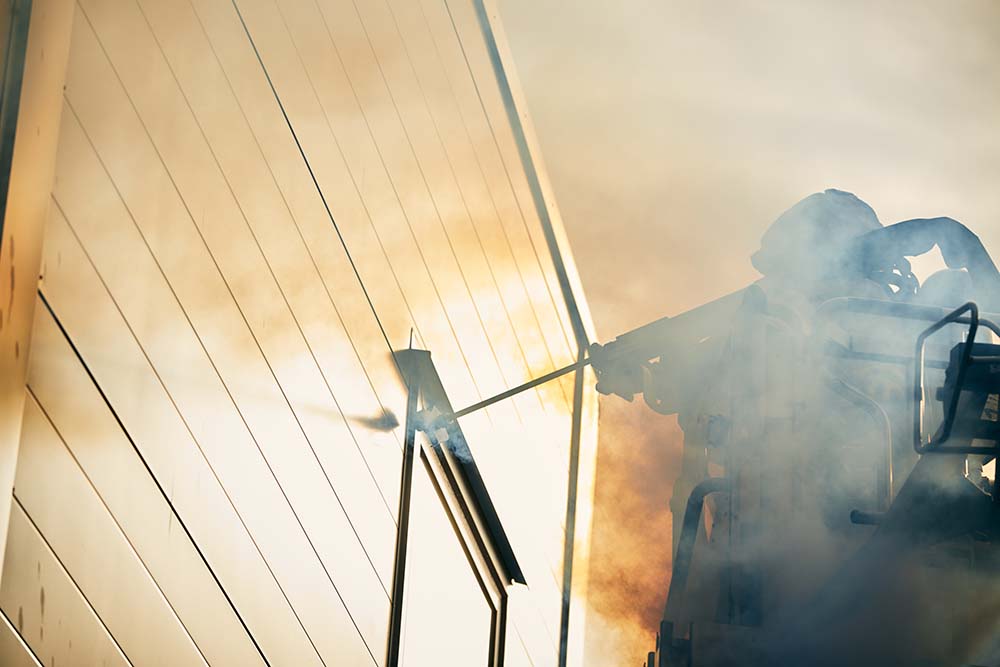
Cobra Benefits
Limits firefighter contamination from toxic fire gases.
The fire and fire gases are suppressed from outside the fire compartment, with firefighters only entering to dampen the remaining hot spots. This limits exposure to toxic fire gases. If an opening can be created, PPV can be used as the fire crews enter. This will reduce contamination as the fire gases are ventilated.
Minimises firefighter exposure to high temperatures.
Fires in large buildings can expose firefighters to very high temperatures when using traditional methods. Cobra utilises small water droplets. These droplets absorb significant amounts of heat energy very quickly. This reduces the temperature within the fire compartment, allowing firefighters to enter a much cooler environment with a significantly reduced risk of backdraft or flashover.
Quick intervention.
Getting equipment in place can use up valuable time. Cobra can be deployed quickly, and the equipment is light in weight and easy to handle, which enables rapid changes if the desired result is not achieved. The training programme that underpins Cobra gives fire crews the ability and confidence to deploy Cobra very quickly on arrival.
Limits damage from fire and water.
When fighting fires, traditional firefighting methods use a considerable amount of water – 450 litres per min or more. This will result in significant water damage to the property and the stored goods. Cobra uses 60 litres of water per minute – considerably less than traditional firefighting methods. A fine water mist used into a hot compartment will result in evaporation of the water and very little or no water damage.
Limits water use.
As Cobra only uses 60 litres of water per minute, an 1800 litre tank of water will last 30 minutes with continuous Cobra use. This gives fire crews an opportunity to secure further water supplies where needed – vitally important in areas where water supplies are scarce.
Reduces environmental impact from the fire.
The rapid fire and fire gas suppression associated with Cobra means that less toxic emissions get into the atmosphere. Reduced water consumption means less contaminated water runoff gets into watercourses.
Benefits of Cobra use
- Significantly reduce the risks to firefighters
- Limits firefighter contamination from toxic fire gases
- Minimises firefighter exposure to very high temperatures
- Quick intervention
- Limits damage from fire and water
- Minimising damage to the building and contents – allowing the business to survive and carry on
- Limits water use
- Reduces environmental impact from the fire
